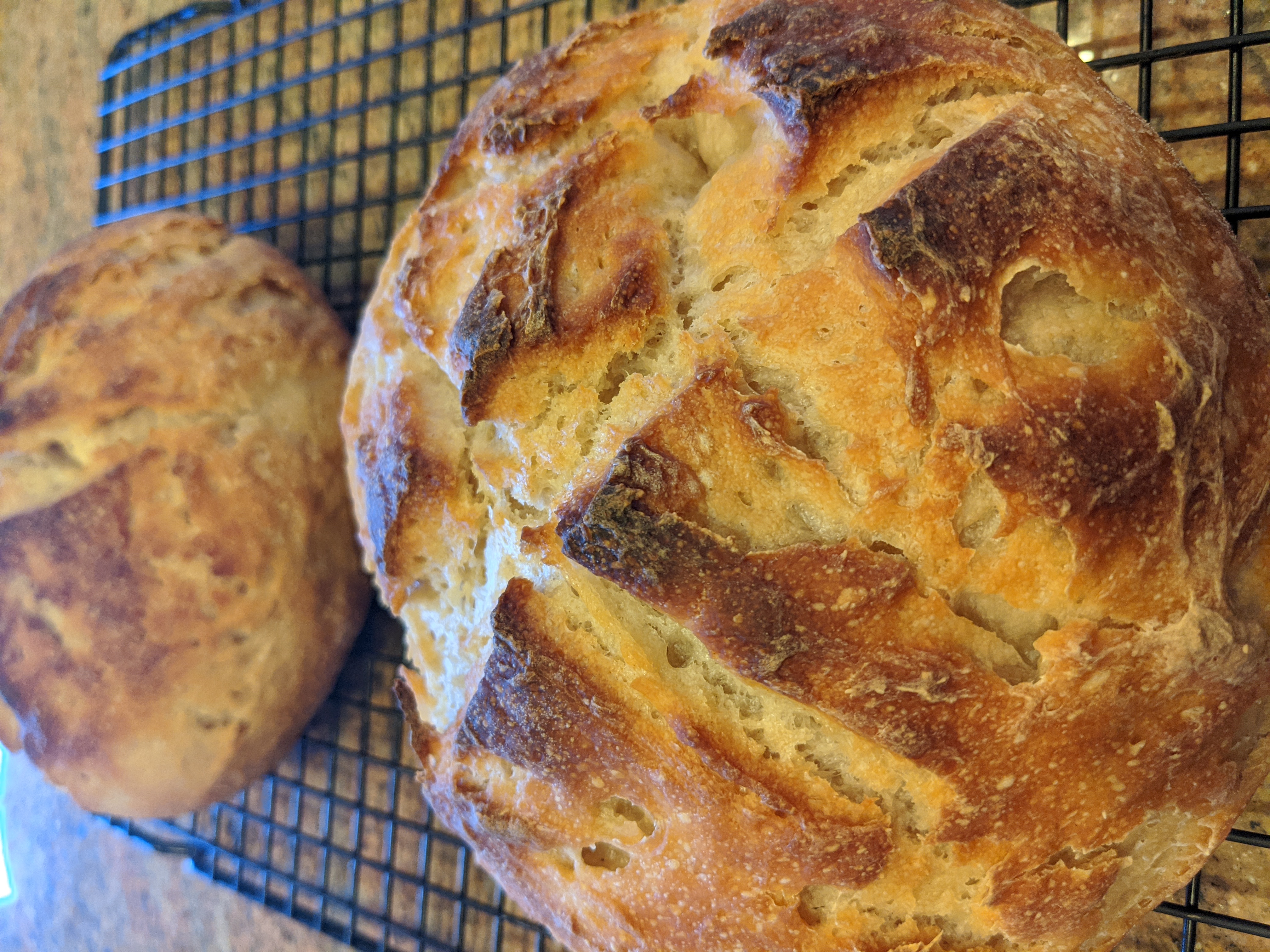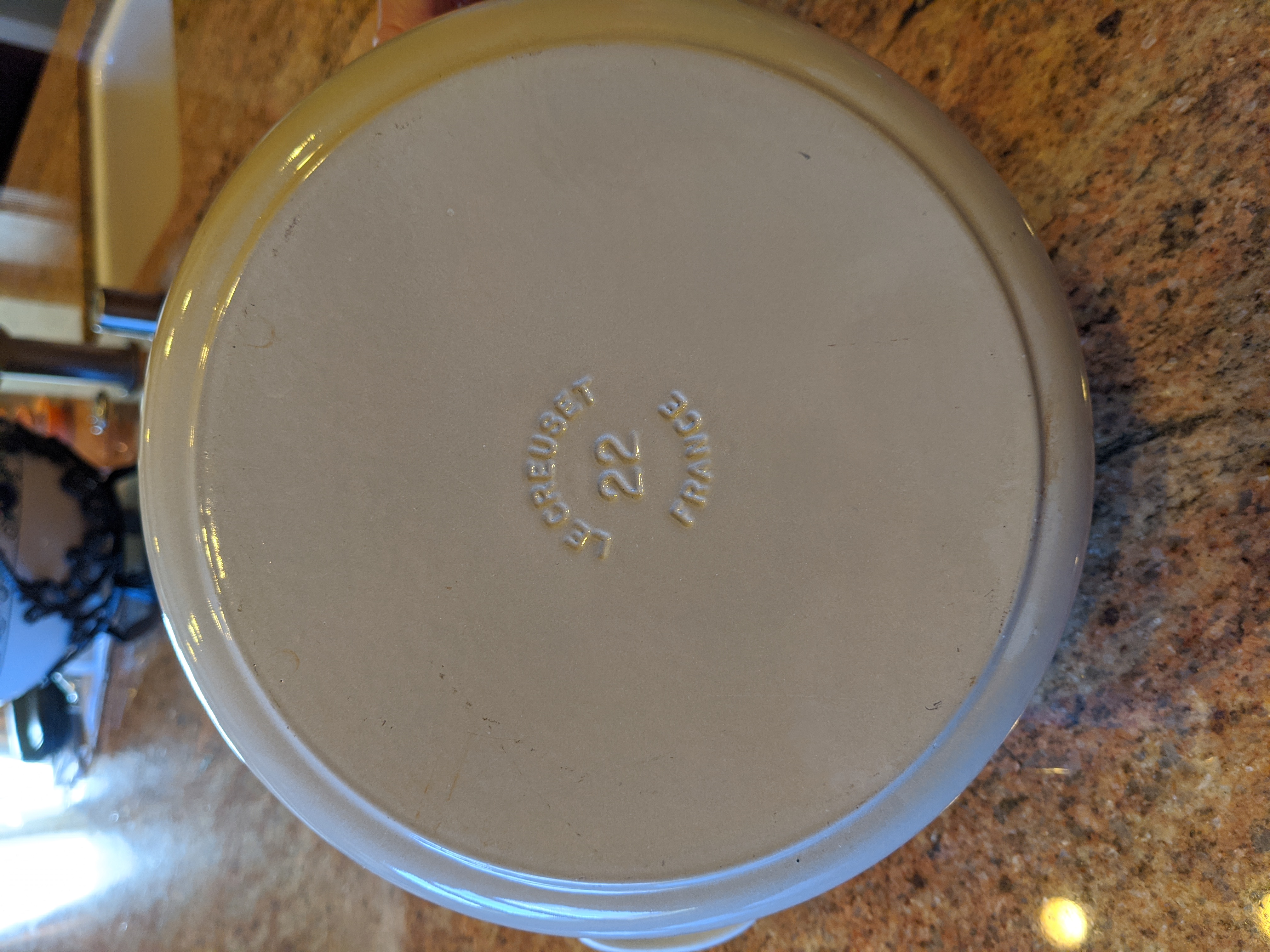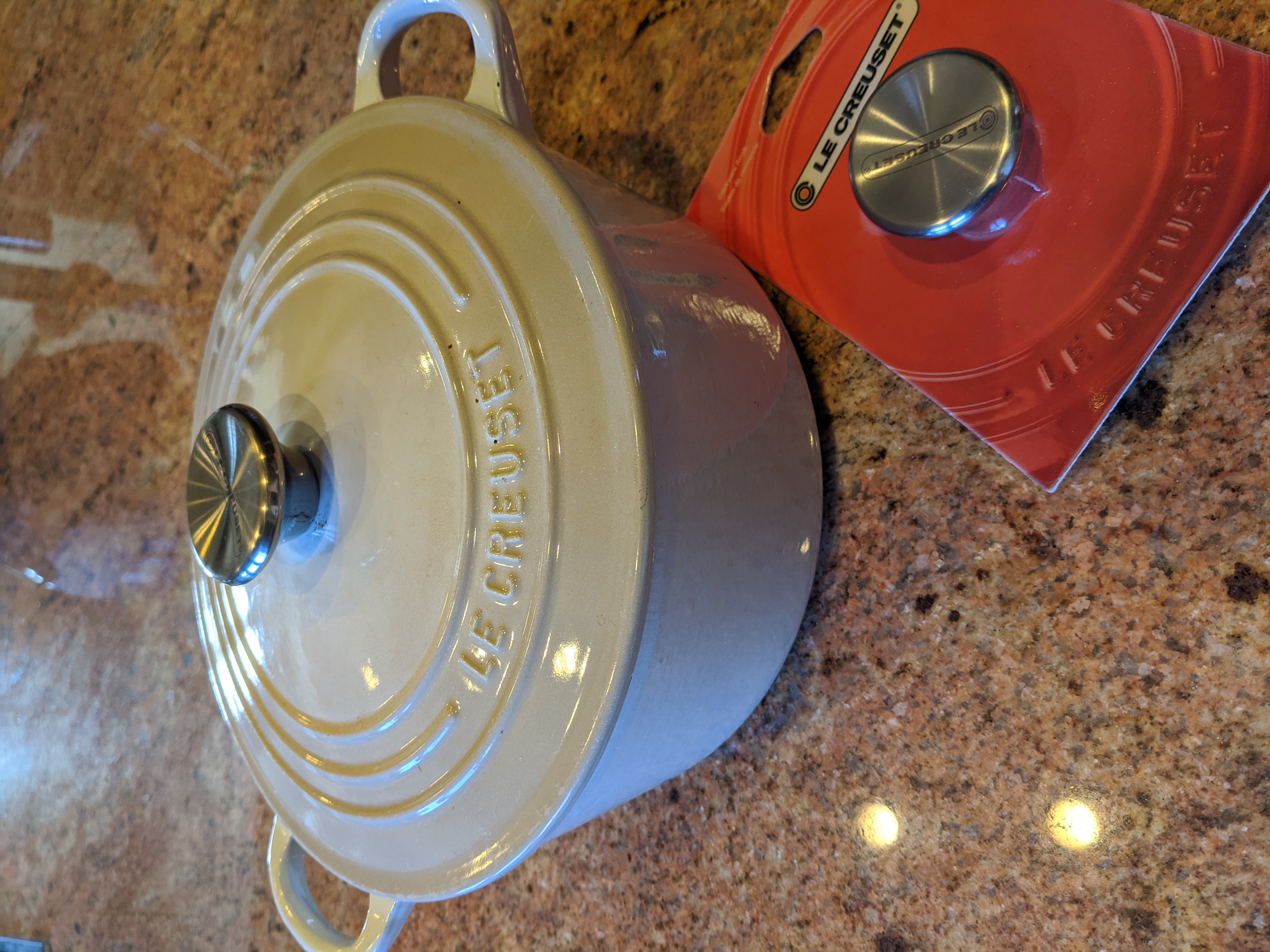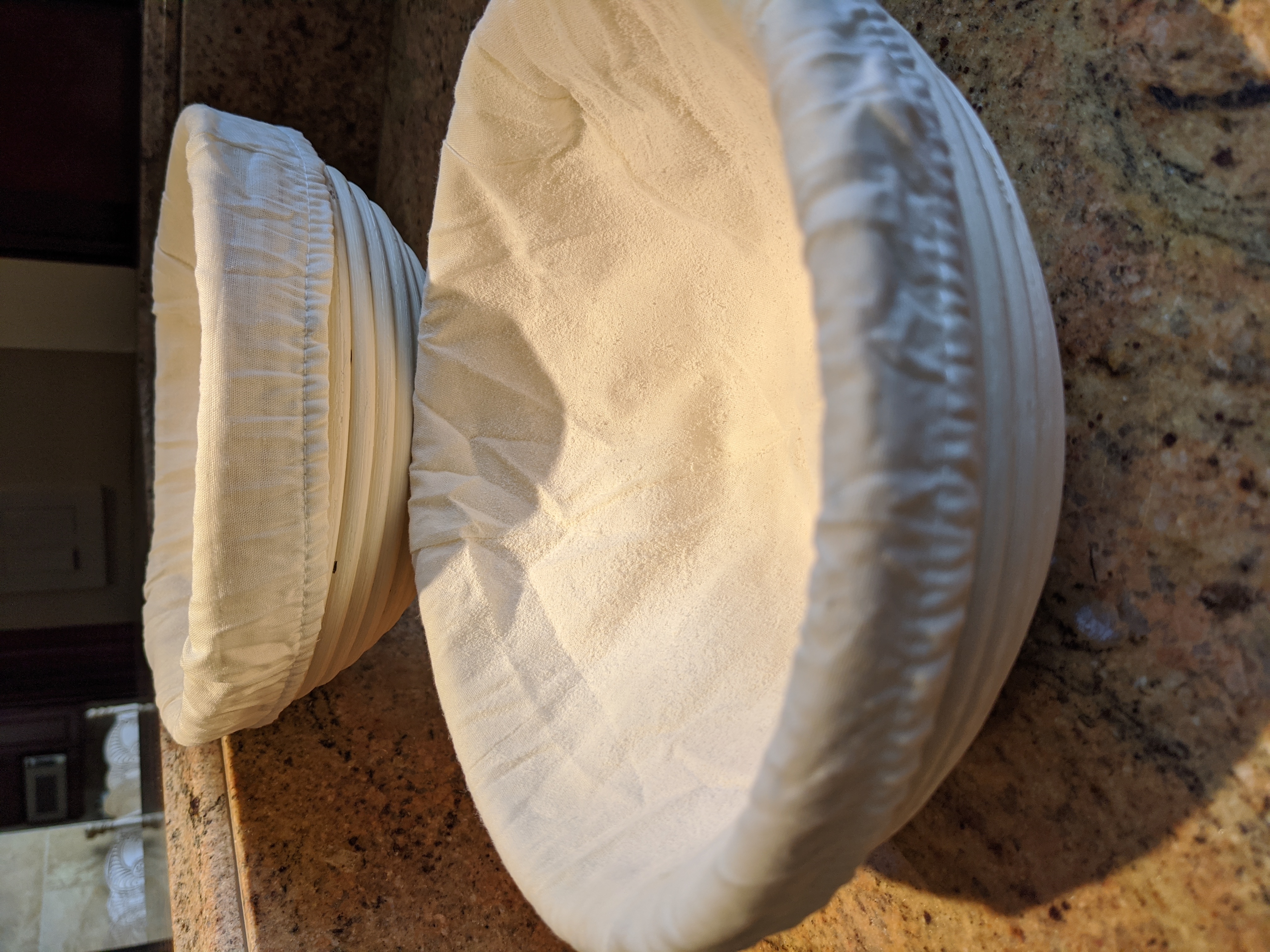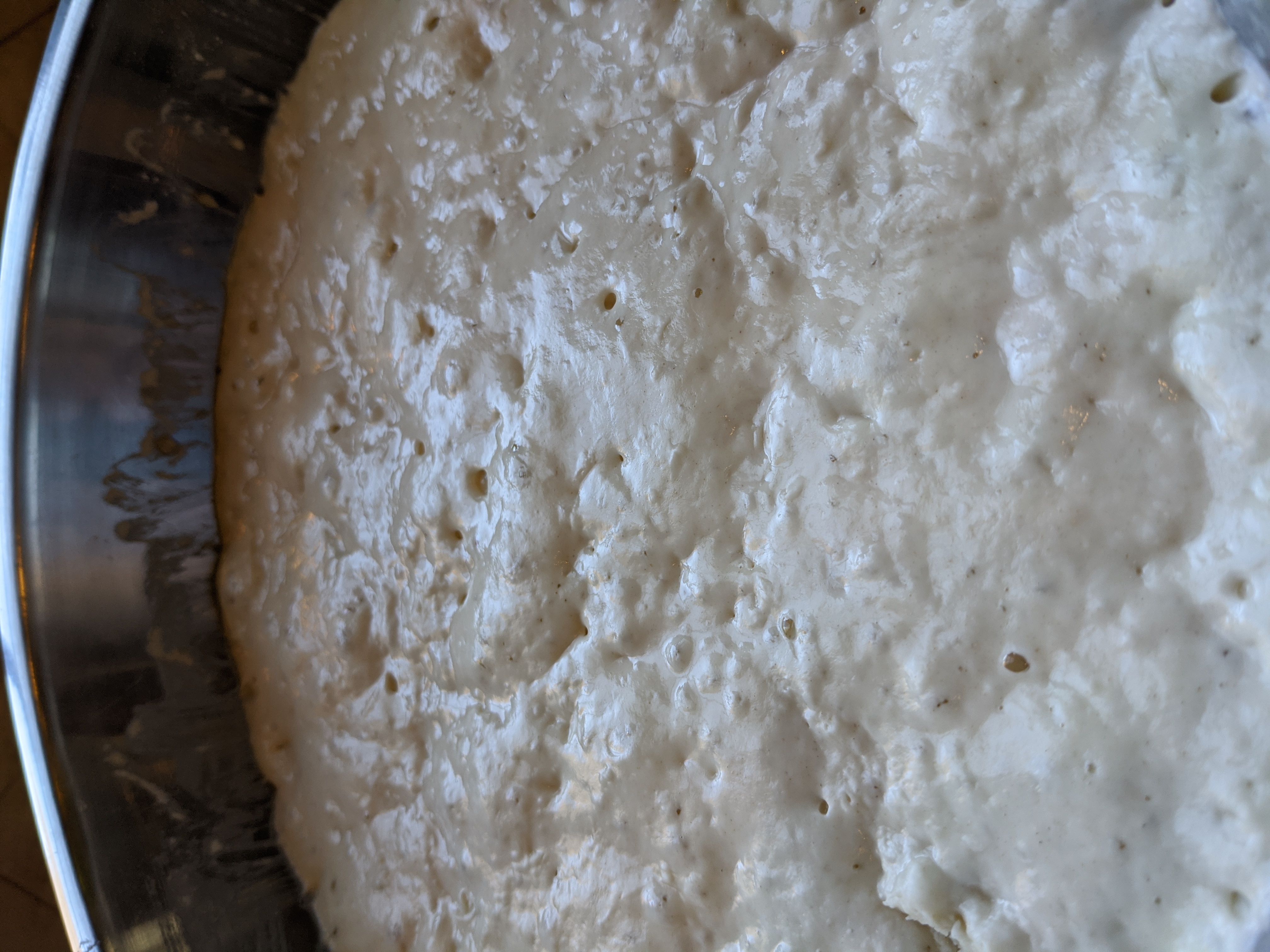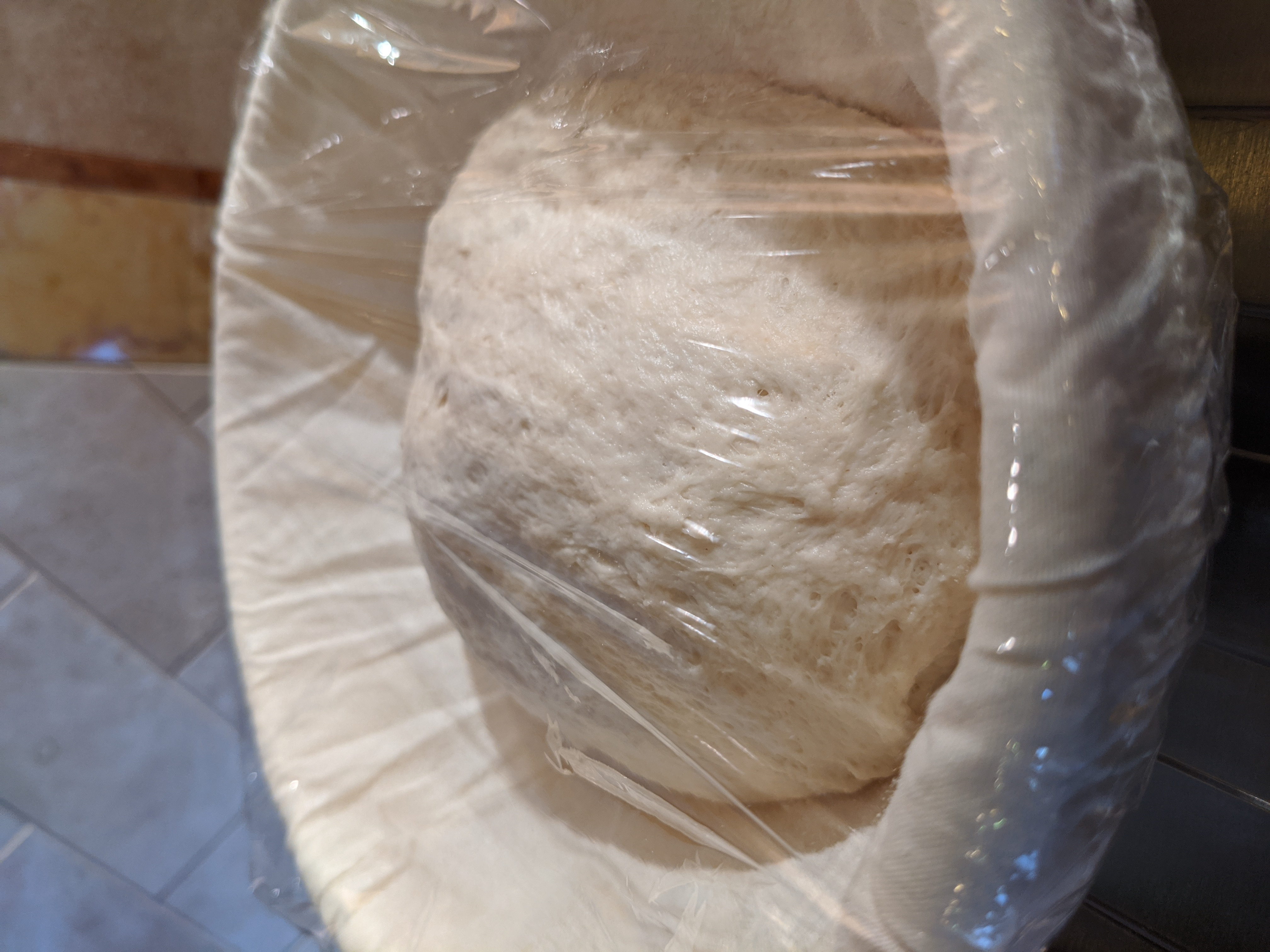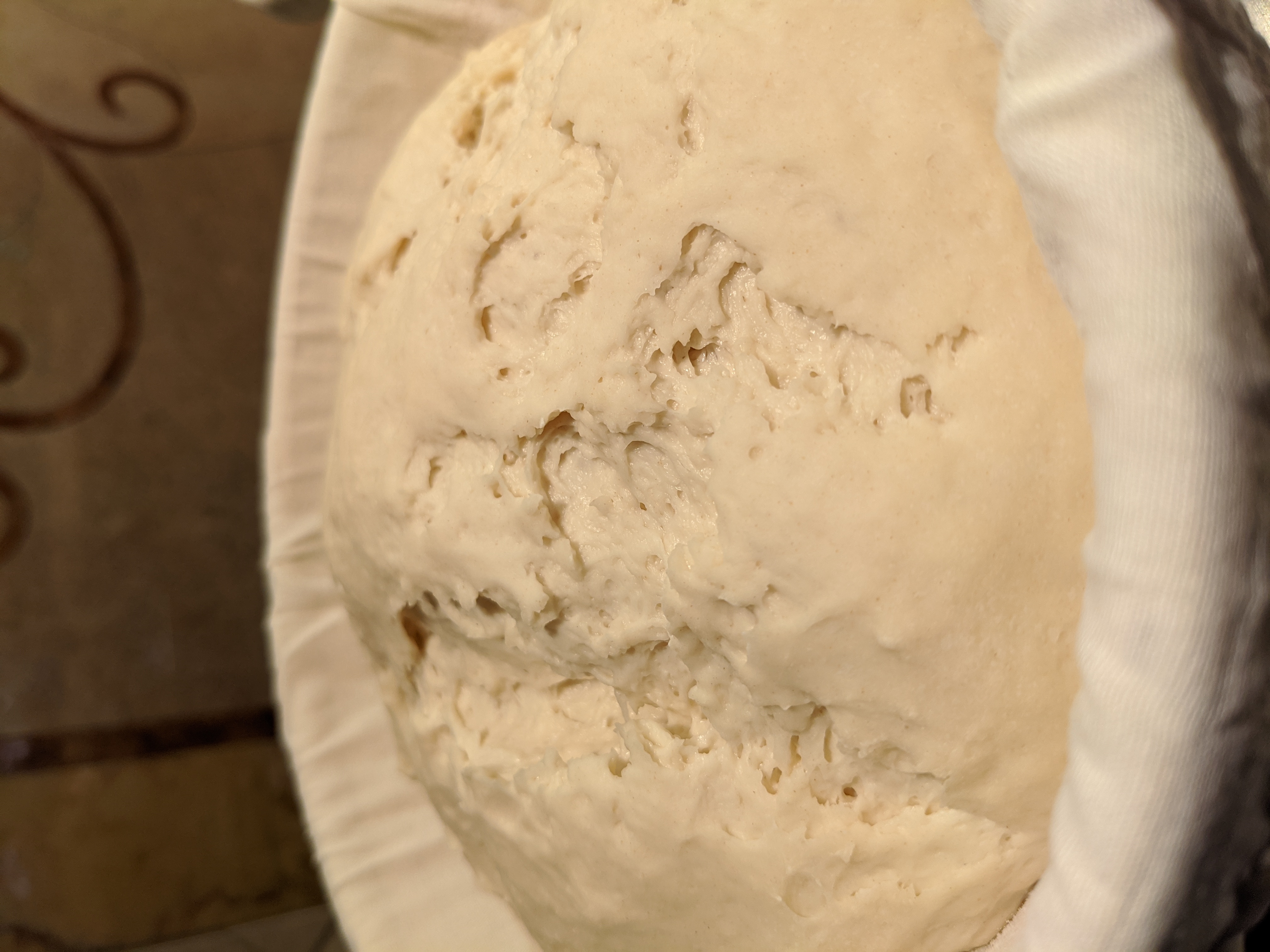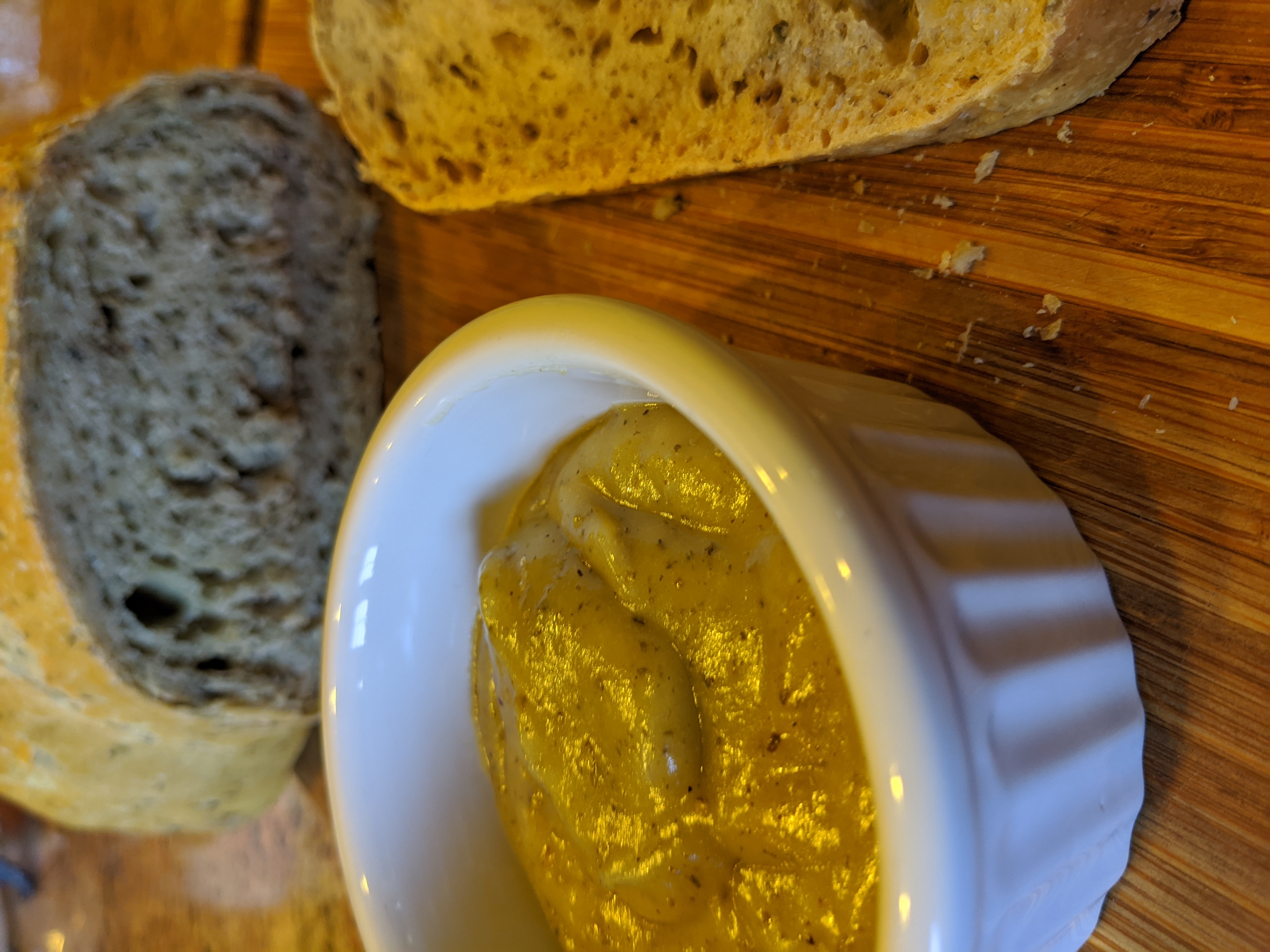Sourdough Bread
Description
We enjoy a warm slice of sourdough bread with some butter or some extra virgin olive oil with some minced garlic and a bit of salt and a few red chili flakes…and it is absolutely delicious when it is homemade! This recipe takes time, but it is one I have made about once a week and “fine-tuned” it over time. After experimenting with several variations, this recipe has proven to be relatively fool-proof and it consistently produces wonderful bread.
At a Glance
Equipment
It is important to have two Dutch ovens available for this Sourdough Bread recipe; we normally use two of our Le Creuset Dutch ovens – one of them is Le Creuset number 22 (3.5 quart) and the other is Le Creuset number 26 (5.5 quart):
We carefully use special lid handles on these Dutch ovens that are specially made to withstand high temperatures in order to ensure that they do not melt in the high heat of the oven when we are baking this bread.
Finally, it is important to have two proofing bowls, which are also known as bannetons to make this recipe:
Ingredients
1 cup of Sourdough Starter (recently “fed” for a few days, so that it is doubling in size between “feedings”, and is bubbling), and you can easily access that recipe by clicking on that recipe title
3 cups of All-Purpose Flour
2 cups of Bread Flour
1-⅔ cups of lukewarm Water
2-½ teaspoons of Salt
½ teaspoon of Citric Acid (this is optional, but it provides an additional “tangy” taste to the dough)
1 tablespoon of Sugar
Extra All-Purpose Flour for the work surface and the bannetons
Directions
In a large bowl, mix the starter, 3 cups of the all-purpose flour, and the water. Stir them to combine everything completely for about 1-2 minutes. Once they are fully combined, cover the bowl and let it sit at room temperature (about 70 degrees) for about 4 hours. At this point, the dough should be showing signs of bubbling on the surface:
Place the covered bowl in the refrigerator for 12-16 hours. (We usually time this step, so that it sits in the refrigerator overnight). On the next morning, remove the dough from the refrigerator and let it come to room temperature. In a separate bowl, whisk together the 2 cups of bread flour, the salt, the citric acid, and the sugar until they are fully integrated. Begin to add the dry ingredients to the dough. Move the dough to a floured surface and knead the dough to form a smooth ball. Place the dough in a large bowl, and cover and let set at room temperature (about 70 degrees) for about 4-5 hours. It should be about double in size and nice and puffy:
Divide the dough in half, and shape the dough into 2 balls. At this point, be careful not to punch the air out of the dough, so do this step very gently. Place the dough balls into the bannetons that have been floured to avoid the dough sticking to the bannetons. Again, cover the dough balls and let them rise for about 3-4 more hours at room temperature:
As you near the end of this rising time, heat the oven to 475 degrees F and put the two Dutch ovens with their lids into the oven, so that they become very hot. After the oven has been on for at least 30 minutes and the Dutch ovens are hot, before removing the Dutch ovens from the oven, gently place the dough onto two sheets of parchment paper and score the top of the dough with a serrated knife. The parchment paper will be used to lower the dough into the Dutch ovens, so the parchment paper must be about 18-24 inches long. Spray the dough with a few spritzes of water. Remove the Dutch ovens from the oven, quickly remove the lid and lower the dough into each Dutch oven:
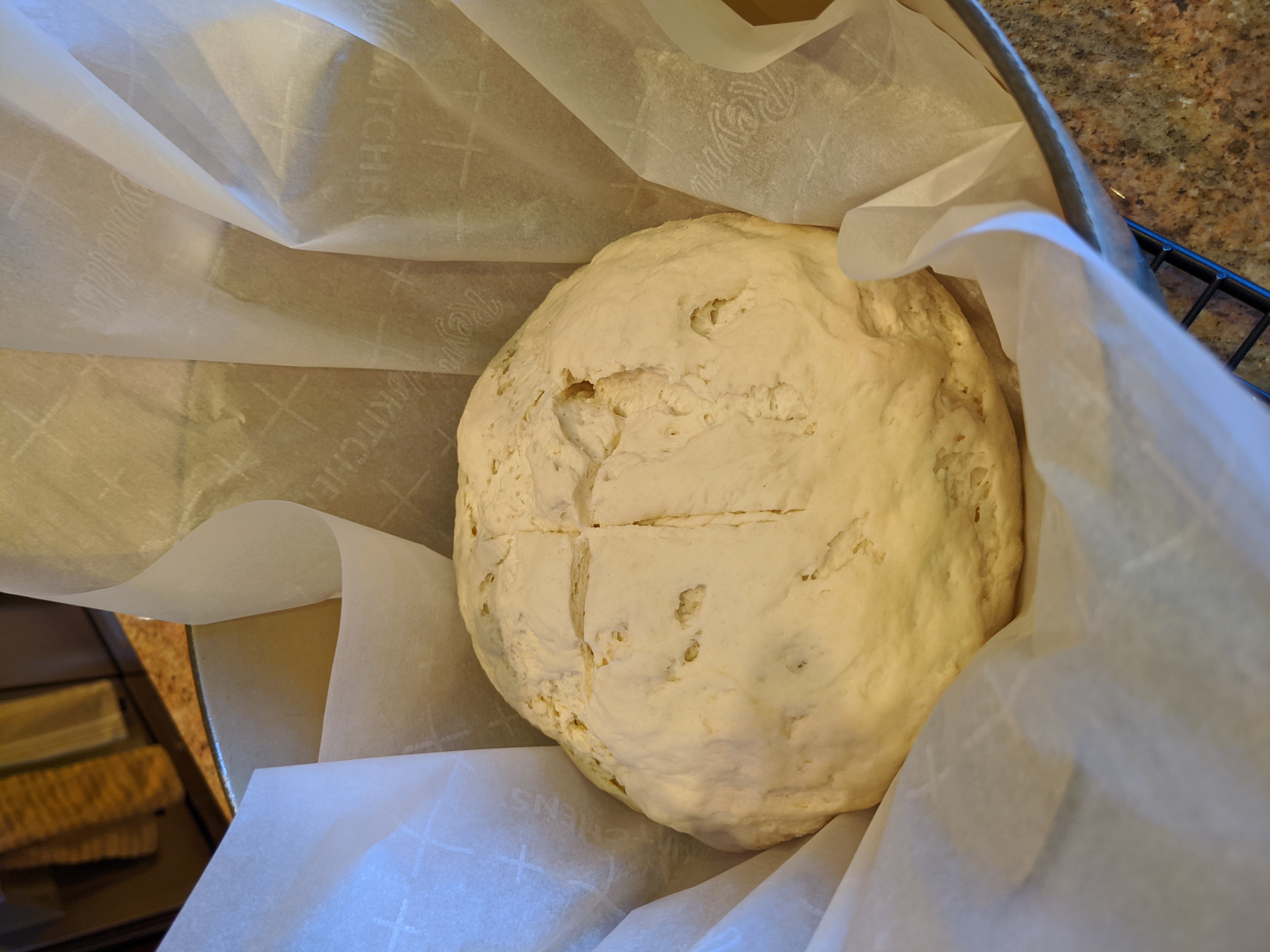
Place the lids on the Dutch ovens and return them to the oven for about 20 minutes. The spritz of water and the lid will help create a nice crust on the outside of the bread. After 20 minutes, remove the lids, lower the oven temperature to 450 degrees F, and continue cooking the bread for another 20 minutes. Once the bread is done, remove the bread from the oven and place it on a cooling rack. While it is always tempting to slice the bread immediately, let it rest for at least 20 minutes before slicing.


